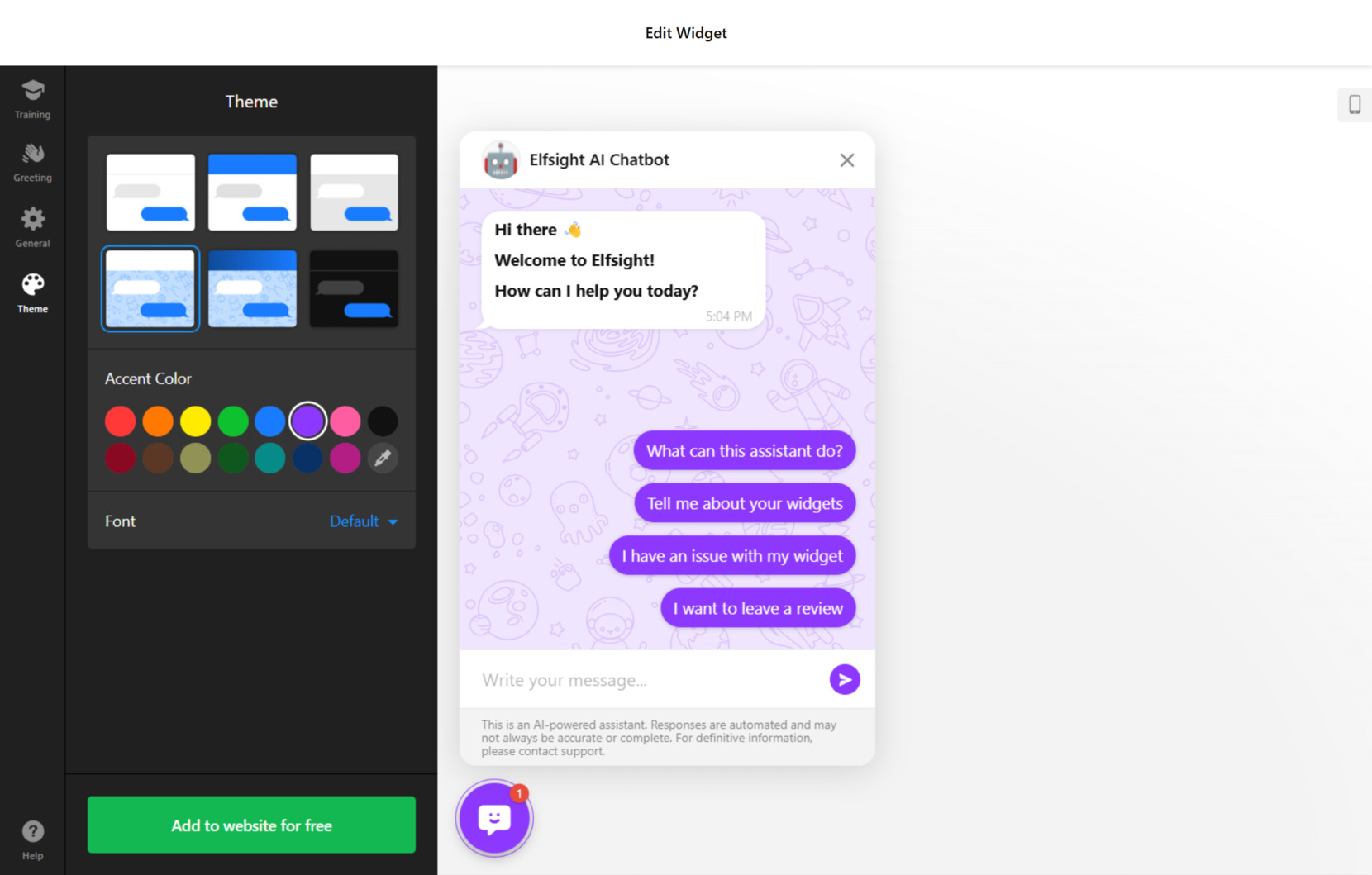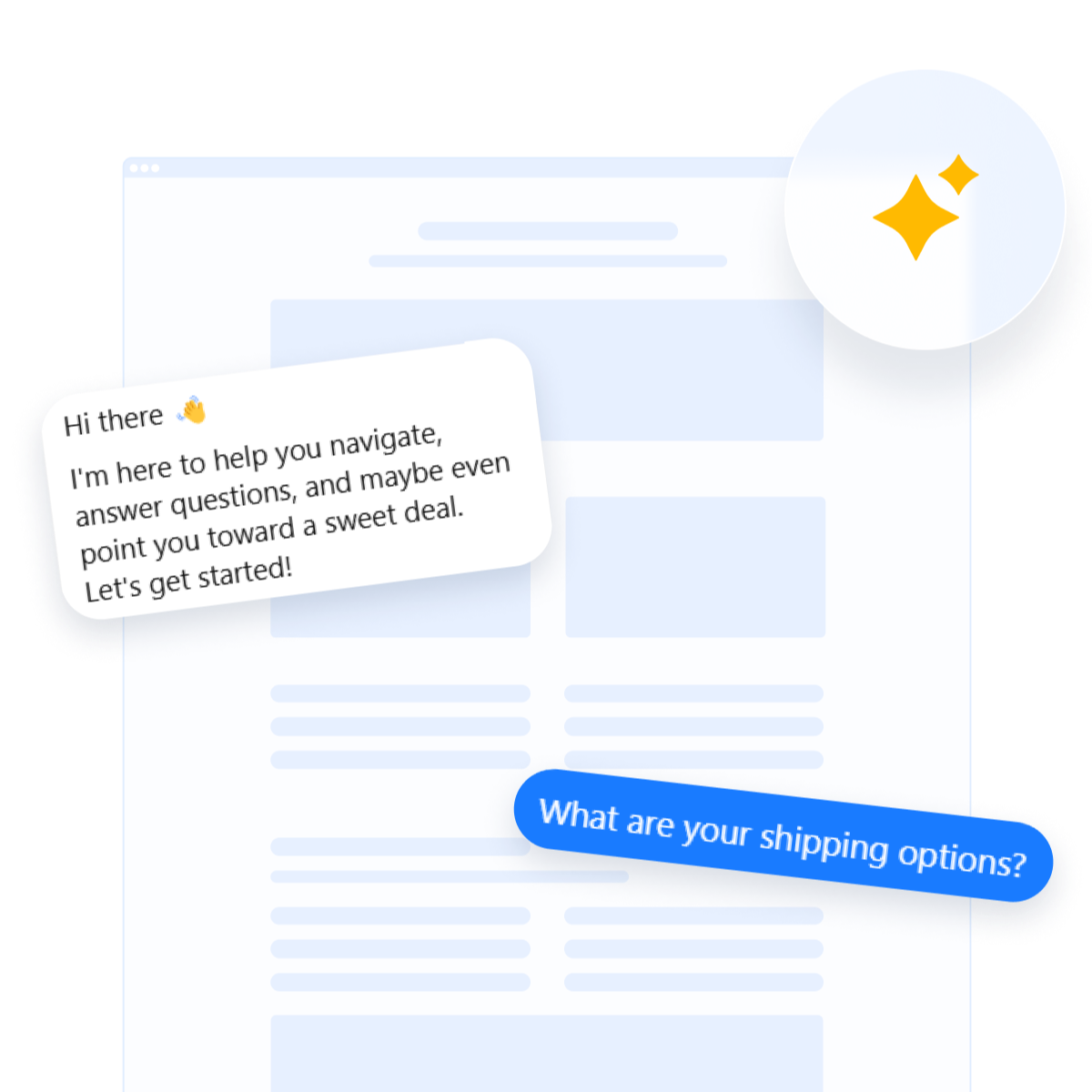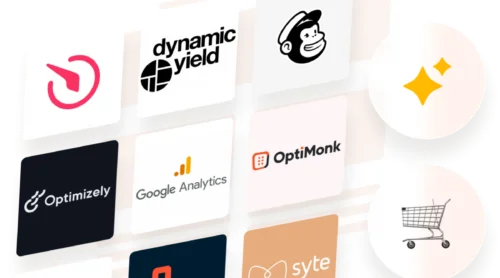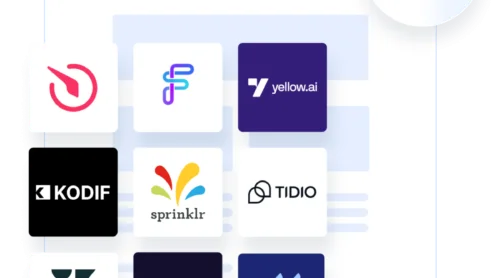Artificial Intelligence is no longer a futuristic concept — it’s a game-changing technology that is transforming industries worldwide. From automating repetitive tasks to enhancing customer experiences and unlocking deep business insights, AI is reshaping how companies operate, compete, and grow.
Businesses that integrate AI effectively gain a competitive advantage by making data-driven decisions, improving efficiency, and optimizing operations. Whether it’s through AI-powered chatbots, predictive analytics, or intelligent automation, AI helps companies reduce costs, enhance productivity, and deliver personalized customer experiences at scale.
With the AI market expected to surpass $1.8 trillion by 2030, companies that delay adoption risk falling behind. This guide will provide a step-by-step approach to integrating AI into your business — covering key strategies, tools, and best practices to ensure a seamless and impactful implementation.
Understanding AI’s Business Potential
AI is revolutionizing the way businesses operate, enabling automation, efficiency, and smarter decision-making. At its core, AI involves machines that can analyze data, learn patterns, and make decisions with minimal human intervention. Businesses are leveraging AI to enhance customer interactions, optimize workflows, and unlock new revenue streams.
From startups to large enterprises, AI adoption is on the rise because of its ability to process vast amounts of data, extract insights, and improve operations across industries such as finance, healthcare, retail, and manufacturing.
Key AI applications in business
| AI application | Description | Use cases |
|---|---|---|
| Machine Learning (ML) | ML algorithms analyze data, identify patterns, and make predictions, allowing businesses to make data-driven decisions and automate complex processes. | – Sales forecasting and demand prediction – Personalized recommendations in e-commerce – Fraud detection in banking |
| Natural Language Processing (NLP) | NLP enables AI to understand, interpret, and generate human language, improving communication between businesses and customers. | – AI chatbots and virtual assistants – Sentiment analysis for customer feedback – Automated transcription and language translation |
| Computer Vision | AI-powered image and video recognition helps automate processes, improve security, and enhance decision-making in industries reliant on visual data. | – Facial recognition for security – Automated quality control in manufacturing – Medical imaging analysis in healthcare |
| Robotic Process Automation (RPA) | RPA automates repetitive, rule-based tasks, reducing human effort and increasing operational efficiency. | – Invoice processing and financial reporting – Automated data entry and document management – HR onboarding automation |
Why AI business integration Is important
AI is transforming industries at an unprecedented pace, driving both economic and operational benefits for businesses worldwide. By automating workflows, AI enables organizations to reduce operational costs at the same time increasing productivity.
Beyond efficiency, AI is helping businesses unlock new revenue streams through hyper-personalization and data-driven insights. From predictive analytics to automated customer interactions, AI empowers companies to tailor their services to individual customer needs, boosting engagement and loyalty. Moreover, industries that integrate AI effectively are experiencing enhanced security, better decision-making, and improved customer satisfaction — factors that are crucial for long-term success.
As AI capabilities continue to advance, businesses that fail to adopt AI risk falling behind competitors. Those that embrace AI strategically will gain a competitive edge, positioning themselves for growth and innovation in the years to come.
Quick Way to Integrate AI into Business: AI Chatbot
If you’re looking for the fastest and easiest way to implement AI into your business, a website AI chatbot is the perfect starting point. Among the many solutions available, Elfsight AI Chatbot widget stands out as one of the most user-friendly and effective tools for businesses of all sizes.
This no-code chatbot requires no technical expertise, making it accessible even for non-developers. In just a few clicks, businesses can deploy an AI-driven assistant that enhances customer interactions, automates responses, and boosts engagement — all without the need for costly development.
How to set up an AI chatbot on your website
Getting started with Elfsight AI Chatbot is a straightforward process. Here’s how you can integrate AI into your business in minutes:
- Open the widget editor and input your website URL or business information to set up your assistant.
- Set up the bot’s responses, greeting message, and any extra instructions.
- Tailor the widget’s look, settings, and theme to match your website’s design.
- Publish the chatbot, copy the embed code, and add it to your website. You’re all set!

AI Chatbot features & business benefits
| Feature | Business benefit |
|---|---|
| 24/7 Automated Customer Support | Ensures instant responses, improving customer satisfaction and reducing wait times. |
| No-Code Installation | Allows quick and easy integration without technical expertise, saving development costs. |
| Natural Language Processing (NLP) | Enables more human-like interactions, making conversations feel natural and engaging. |
| Multi-Platform Integration | Works seamlessly to websites built on different platforms – WordPress, Shopify, Wix, WooCommerce, BigCommerce, HTML, etc. |
| Lead Generation & Data Collection | Captures customer information, helping businesses build stronger marketing and sales strategies. |
| Seamless Handover to Live Agents | Transfers complex inquiries to human representatives, ensuring a smooth customer experience. |
| Analytics & Performance Tracking | Provides insights into customer interactions, allowing businesses to improve chatbot effectiveness. |
Why an AI Chatbot is the best starting point for AI business integration
Unlike complex AI-driven solutions that require extensive data training and customization, chatbots offer a plug-and-play AI experience that delivers immediate value. Businesses can start automating customer interactions, generating leads, and enhancing user engagement with minimal effort. With the Elfsight AI Chatbot, integrating AI into your business is no longer a challenge — it’s an opportunity for growth and efficiency.
Build your own AI chatbot for any business with our friendly editor!
Buy vs. Build: Choosing the Right AI Approach
AI adoption in business is no longer a luxury — it’s a necessity. However, one of the biggest decisions companies face is whether to build a custom AI solution tailored to their specific needs or buy an off-the-shelf AI tool that offers quick deployment and scalability.
Understanding the advantages and trade-offs of each approach is crucial for making an informed decision.
| Factor | Build (custom AI solution) | Buy (off-the-shelf AI software) |
|---|---|---|
| Customization | Fully tailored to unique business needs. | Limited customization; pre-built features. |
| Cost | High initial investment (development, infrastructure, talent). | Lower upfront cost with subscription-based pricing. |
| Implementation Time | Takes months to develop and deploy. | Instant or fast deployment. |
| Scalability | Can be expanded but requires ongoing development. | Easily scalable with vendor updates and support. |
| Maintenance | Requires a dedicated team for updates, security, and improvements. | Vendor handles updates, support, and security. |
When you should opt for building:
- Your business has highly specific AI requirements that off-the-shelf software cannot meet.
- You need complete control over data, security, and AI model training.
- You have the budget and technical expertise to develop and maintain a proprietary AI system.
When you should choose to buy:
- You want a quick and cost-effective AI solution that requires minimal setup.
- You need AI capabilities for common use cases like automation, customer service, or analytics.
- You prefer a scalable and regularly updated solution managed by a trusted vendor.
AI Tools and Technologies for Business Success
Whether you’re looking to streamline workflows, enhance customer interactions, or gain actionable insights from data, the right AI tool can significantly boost efficiency and decision-making.
Below are several ides of how to use AI in your business for various business functions.
📄 AI-Powered CRM: Salesforce Einstein
Salesforce Einstein is an AI-driven customer relationship management (CRM) system that helps businesses make data-backed decisions, automate sales processes, and enhance customer engagement.
It integrates seamlessly with the Salesforce ecosystem, offering features like:
- Predictive sales forecasting. Uses AI to analyze historical data and predict future sales trends.
- Automated lead scoring. Identifies high-potential leads based on past interactions and customer behavior.
- Personalized customer insights. Recommends the best next steps for sales and marketing teams.
- Chatbots & NLP-powered assistance. Helps customer support teams automate responses and improve service efficiency.
Businesses using Salesforce Einstein can improve sales productivity, enhance customer relationships, and optimize decision-making through AI-powered insights.
🤖 Automation Tools: UiPath
UiPath is an advanced automation platform focused on Robotic Process Automation (RPA). It allows businesses to automate repetitive, rule-based tasks that would normally require human intervention, helping organizations save time and reduce costs. UiPath’s AI-driven capabilities are designed to handle complex workflows across various industries, including finance, HR, and IT.
Key features of UiPath include:
- Automated workflow management. Automates tasks such as invoice processing, data entry, and customer onboarding, minimizing human effort and maximizing efficiency.
- Document understanding. Uses AI to process and extract data from documents, such as invoices or contracts, with a high degree of accuracy.
- Integration with existing systems. Easily integrates with various enterprise systems, ensuring smooth automation across platforms like SAP, Oracle, and Microsoft.
- Scalability. From small teams to large enterprises, UiPath offers a scalable solution that can grow with your business.
With UiPath, businesses can eliminate manual errors, speed up internal processes, and improve overall productivity. By automating workflows, teams can focus on more strategic and creative tasks, while RPA handles the repetitive, time-consuming activities.
📊 Predictive Analytics: Google AI
Google AI offers a suite of powerful predictive analytics tools designed to help businesses make data-driven decisions and forecast trends more accurately. With its accessible, cutting-edge technology, Google AI enables businesses to leverage machine learning models without requiring deep technical expertise.
Key features of Google AI include:
- Google Cloud AutoML. A suite of machine learning tools that allow businesses to build custom models for image recognition, natural language processing, and structured data analysis. It simplifies the machine learning process, making it accessible to non-technical users.
- BigQuery ML. A tool integrated with Google BigQuery that enables businesses to create and deploy machine learning models directly on large datasets without moving data between platforms. It supports a range of machine learning tasks, such as regression and classification.
- AI-powered insights. Helps businesses analyze large volumes of data and gain predictive insights for improving decision-making, optimizing customer experiences, and anticipating market trends.
By using Google AI, businesses can enhance their forecasting abilities, predict customer behavior, and streamline operations with minimal manual intervention. Its scalability and ease of use make it an ideal solution for businesses looking to adopt predictive analytics and harness the power of AI.
📣 AI-Powered Marketing: HubSpot AI
HubSpot AI Sales & Marketing tools leverage machine learning to automate and optimize various aspects of digital marketing, helping businesses streamline their marketing processes and improve engagement with their audience. They help automate tasks like email marketing, social media posting, and customer segmentation. These tools are designed to save time and enhance the effectiveness of marketing efforts.
Key features of HubSpot AI Marketing and Sales tools include:
- Automated email marketing. Uses AI to personalize email content and delivery times based on customer behavior and preferences, boosting open and conversion rates.
- Social media automation. Automatically schedules posts, optimizes content for each platform, and analyzes engagement metrics to improve social media strategies.
- Customer segmentation. Segments customers more accurately by analyzing past behaviors and interactions, ensuring more targeted and effective campaigns.
- AI campaign recommendations. Provides insights and suggestions for campaign optimization, helping marketers make data-backed decisions to maximize performance.
With the help of HubSpot’s AI tools, businesses can improve marketing efficiency, boost engagement, and deliver highly personalized customer experiences. They allow teams to focus on high-level strategy while automating repetitive tasks, ultimately driving growth through smarter marketing efforts.
👥 HR & Recruitment AI: HireVue
HireVue is an AI-powered recruitment tool designed to streamline the hiring process and improve candidate assessment. By utilizing AI-driven video interviews and behavioral assessments, HireVue evaluates candidates based on facial expressions, speech patterns, and verbal responses, providing HR teams with deeper insights into candidate suitability.
Key features of HireVue include:
- AI-driven video interviews. Analyzes video interviews to assess candidates’ emotional responses, speech patterns, and overall communication skills.
- Behavioral assessments. Evaluates how candidates react to situational questions, helping HR professionals assess soft skills and cultural fit.
- Data-driven insights. Uses AI to provide actionable feedback and predict how candidates will perform in specific roles, improving decision-making.
- Bias reduction. Artificial intelligence ensures a more objective and consistent evaluation, helping reduce unconscious bias in hiring.
With HireVue, businesses can enhance the recruitment process, identify the best talent faster, and ensure more accurate, data-driven hiring decisions. It helps HR teams make better, more informed choices, leading to improved talent acquisition and organizational success.
Defining Your AI Business Strategy
Knowing how to use AI for business needs isn’t just about jumping on the technological bandwagon. A solid AI strategy must be developed to help you solve complex problems, improve decision-making, and ultimately drive growth.
Before diving into implementing AI into your business processes, define a clear strategy that ties all the tools you want to use to your business vision and desired outcomes. Below are the key steps and questions to consider when developing an effective AI business strategy.
🎯 Aligning AI with your business goals
To make AI work for your business, you need to begin by understanding your overarching goals. AI is a powerful tool, but it needs to be applied with purpose. Aligning AI initiatives with your business’s strategic objectives will ensure that the integration adds real value, supports growth, and drives tangible results.
Here are some steps to help align AI integration with your goals:
- Identify key business areas. Look at where AI can have the most impact within your organization—whether it’s in customer service, marketing, supply chain management, or HR.
- Set clear objectives. Define specific outcomes you’d like to achieve with AI, such as improving operational efficiency, increasing revenue, or enhancing customer experience.
- Evaluate data availability. AI models need data to be effective. Assess the quality and availability of data in your business and how it can feed into AI algorithms for actionable insights.
- Involve key stakeholders. AI implementation should involve multiple departments, including leadership, IT, operations, and customer service. By having input from all relevant stakeholders, you ensure the AI strategy supports all areas of the business.
- Create a roadmap. Develop a phased approach to AI integration, ensuring it evolves in tandem with business growth and emerging opportunities.
❓ Key questions to ask yourself before AI adoption
Before integrating AI into your business operations, asking the right questions will help you ensure its alignment with your overall business objectives. These questions should guide your strategy and ensure that AI adoption is both relevant and beneficial.
AI is a tool, not a catch-all solution. Before implementing AI, it’s important to ask: What specific problem do we want to solve?
- Do you want to automate repetitive tasks?
- Are you seeking more accurate data analysis and predictive insights?
- Do you need to enhance your customer support or streamline workflows?
By identifying the core business challenges AI can address, you’ll be able to choose the right AI tools and technologies for your needs. For example, machine learning might be ideal for improving data-driven decision-making, while natural language processing (NLP) would be better for automating customer service interactions.
AI adoption should not just be about keeping up with the competition; it should be about using AI to outperform competitors. Ask yourself:
- Will AI help us offer faster, more personalized customer experiences?
- Can AI optimize supply chains or improve product recommendations?
- How will AI enable us to enter new markets or create innovative products and services?
By clearly understanding the competitive edge AI can provide, you can align your AI strategy with your business’s long-term vision. AI can be a differentiator, helping you gain a competitive advantage in crowded markets.
AI can serve many different purposes in a business, but it’s essential to determine your primary goal for adopting AI. Each objective will influence the tools and platforms you choose and how you implement them:
- Efficiency: If your primary goal is improving efficiency, AI can help automate mundane tasks, optimize processes, and increase productivity. Robotic Process Automation (RPA) is a great tool for this purpose.
- Customer experience: If your focus is on improving customer experience, AI can be used to power personalized recommendations, 24/7 chat support, and predictive insights. AI-powered CRMs and chatbots are useful here.
- Innovation: If you’re looking to drive innovation, AI can be used for product development, market research, and exploring new business models. AI-driven analytics and creative tools are essential for fostering innovation.
Clearly defining the purpose of AI in your business will help prioritize projects, allocate resources, and set measurable outcomes.
The role of AI implementation strategy in long-term success
An AI business integration strategy isn’t just about short-term wins — it should be a long-term plan that allows you to evolve with the technology as it advances. AI will become more sophisticated over time, and staying ahead of the curve will ensure that your business remains competitive.
The key to AI success is to continuously evaluate and refine your strategy, making adjustments as new tools and opportunities emerge. This adaptability will ensure that AI becomes a sustainable driver of business transformation, not just a passing trend.
By aligning AI with your business goals and asking the right questions, you can integrate AI seamlessly into your operations, drive efficiency, and position your company for growth in the digital age.
Preparing Your Organization for AI
Implementing AI in your business is a transformative process, and for it to succeed, you need to ensure that your organization is prepared for this shift. Preparation goes beyond technology — it also involves cultivating an AI-friendly culture that encourages employee buy-in, offers proper training, and ensures that budgeting and ROI considerations are part of the strategy.
Here’s how to prepare your organization for AI adoption effectively.
Assessing readiness
Before integrating AI solutions, your business needs to assess whether its current infrastructure can support these new technologies. AI-driven tools require robust, scalable systems, and your IT environment needs to be able to handle the demands of AI processing.
Here’s what you need to evaluate:
- Infrastructure. Does your IT infrastructure (hardware, software, and networks) support AI workloads? AI technologies, especially machine learning and deep learning, demand significant computational power, so cloud solutions or dedicated servers may be necessary for large-scale AI applications.
- Data availability. AI relies on data to function effectively. Are you gathering and storing relevant data for AI systems to train on? Assess the quality, volume, and accessibility of your data. For example, data silos can make it difficult to use AI effectively across departments.
- Digital transformation maturity. AI adoption requires a certain level of digital maturity. How well does your business already leverage digital technologies? If your company is still in the early stages of digital transformation, it may be wise to first focus on improving foundational digital tools (e.g., cloud storage, CRM software, or analytics platforms) before diving into AI.
Building an AI-friendly culture
An AI adoption strategy doesn’t just focus on the technology — it’s also about fostering the right organizational culture to support AI. This requires a shift in mindset, as employees at all levels must understand the value of AI and be willing to embrace it.
Key areas to focus on include:
- Employee buy-in. AI can be perceived as a threat to job security. Ensuring that employees understand that AI isn’t here to replace them but to augment their work is essential for fostering a positive attitude towards AI adoption. Encourage open discussions about the benefits AI can bring to employees, such as removing mundane tasks and empowering them to focus on higher-value work.
- Change management. Establish a strategy for guiding your team through the transition. This includes addressing concerns, communicating benefits, and setting clear expectations. Change management helps employees adapt to AI by providing support and reassurance throughout the process.
Training staff to work alongside AI
To make the most of AI, you need to ensure that your workforce is equipped with the skills to work alongside it. Training is key to leveraging the full potential of AI tools and preventing any gaps in knowledge that could hinder success.
Here’s how to approach staff training:
- Identify skill gaps. Determine where your employees may lack the necessary skills to interact with AI tools. This could be technical knowledge (e.g., understanding AI algorithms) or business-related skills (e.g., interpreting AI-generated reports).
- Upskill and reskill. Implement training programs to upskill current employees, especially those in customer service, operations, and marketing, where AI will have a high impact. You might offer training in AI basics, machine learning concepts, and how to use specific AI tools in their daily roles.
- Foster collaboration. AI isn’t about replacing human workers, but rather creating opportunities for collaboration. Encourage employees to work alongside AI, enhancing their expertise with automation and data insights. This will ensure AI is seen as a valuable tool for both individuals and teams, not as a competitor.
Budget and investment planning
Adopting AI isn’t free, so it’s critical to plan your budget carefully to ensure that your AI initiatives are sustainable and aligned with business goals. AI investment isn’t just about the upfront costs of buying or building the technology — it also involves ongoing maintenance, training, and optimization.
Consider the following factors when planning your AI budget:
- AI tools cost. The cost of off-the-shelf AI solutions like chatbots, CRMs, or marketing automation tools can vary widely. These tools may have subscription-based pricing or require a one-time fee for licensing. Custom AI solutions will have a much higher initial cost, as you’ll need to pay for development, infrastructure, and potential integration with existing systems.
- Development and maintenance costs. If you’re building a custom AI solution, the costs associated with data collection, model training, and ongoing updates must be accounted for. AI models need to be continuously trained and optimized, so budget for these recurring expenses.
- Training and support costs. Effective training and ongoing employee education are crucial to ensure AI adoption succeeds. This could involve external training programs, consulting services, or the development of in-house training materials.
- ROI considerations. It’s vital to consider the return on investment (ROI) of AI. AI can generate returns through increased efficiency, cost savings, or revenue growth, but these benefits might take time to materialize. Track key performance indicators (KPIs) such as improved customer service, higher sales conversion rates, or faster decision-making to measure the effectiveness of AI investments.
By ensuring that your infrastructure is capable of supporting AI, your staff is well-trained, and your business is prepared financially, you’ll be setting your company up for success in the AI-driven future. It’s important to think of AI not just as a tool, but as part of an overall business transformation that can unlock new opportunities and drive long-term growth.
FAQ
What are the best AI tools for ecommerce businesses?
How can AI tools improve customer service in my business?
Can ChatGPT be integrated into my business operations?
Can I improve my website’s SEO with ChatGPT?
Conclusion
Knowing how to use AI for your business is essential for staying competitive in today’s fast-evolving landscape. By aligning AI with your goals, preparing your infrastructure, and fostering an AI-friendly culture, your business can unlock efficiencies, enhance customer experiences, and drive innovation.
With careful planning and the right tools, AI adoption can lead to long-term growth and success. The key is to approach AI as a strategic investment that evolves alongside your business to ensure continuous improvement and a strong competitive edge.







